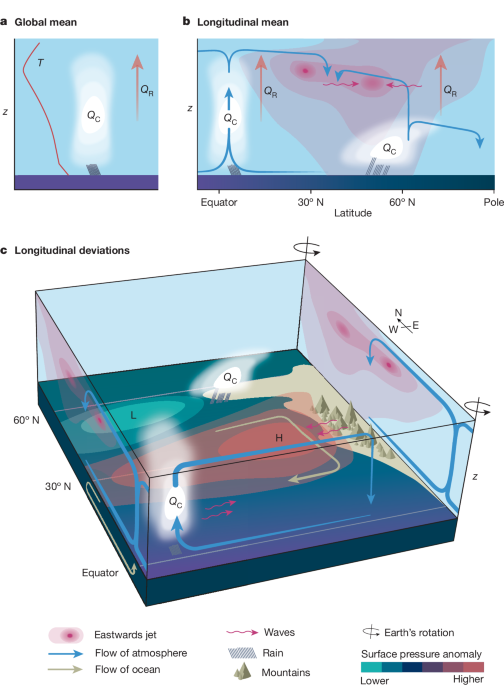Groundbreaking Research on Climate Dynamics: Insights from Influential Studies
Climate change remains one of the most pressing issues of our time, with a plethora of studies shedding light on its complexities. Researchers such as Syukuro Manabe, Richard T. Weatherald, and others have made significant contributions to our understanding of the atmospheric dynamics affected by carbon dioxide and humidity. From Manabe and Weatherald’s foundational papers in the 1960s and 1980s to contemporary investigations into storm patterns and modeling, this body of work showcases the evolution of climate modeling.
### Key Contributions and Their Impacts
– **Thermal Equilibrium Studies**:
– **Manabe & Weatherald (1967)** presented groundbreaking research on the thermal equilibrium of the atmosphere in relation to humidity, laying the foundation for later climate models. This work pioneered the understanding of how varying humidity levels influence climate dynamics.
– **CO2 and Climate Change**:
– In a 1980 study, they elaborated on the effects of increased CO2 levels in the atmosphere, marking a significant milestone in climate science. Their findings indicated how rising CO2 concentrations directly affect global temperature and climate patterns.
### Expanding Understandings of Climate Dynamics
– **Interhemispheric Asymmetry**:
– A 1989 study by Stouffer, Manabe, and Bryan highlighted the differences in climate response between the Northern and Southern Hemispheres due to atmospheric CO2 increases. This research remains vital for understanding global climate inequality today.
– **Recent Climatic Predictions**:
– The 2021 Nobel Prize in Physics recognized significant successful climate projections made in earlier studies. These predictions inform current strategies in climate mitigation and adaptation.
### Modern Perspectives and New Findings
– **Advancements in Climate Modeling**:
– Recent works, including those from the Coupled Model Intercomparison Project (CMIP6), emphasize the complexities and predictabilities of climate responses, solidifying foundational knowledge while exploring new variables that influence regional climates.
– **Atmospheric Dynamics and Weather Patterns**:
– Contemporary studies reveal that human-induced climate changes are altering storm tracks and atmospheric dynamics, necessitating a reevaluation of existing models to accurately predict future changes.
### Conclusion
The collective findings from decades of research underscore the critical need for ongoing study in climate science. As new challenges arise from climate change, these foundational studies serve as essential references guiding policymakers and researchers alike in understanding and mitigating its effects.
**Keywords**: Climate Change, Atmospheric Dynamics, Carbon Dioxide, Humidity, Climate Models, Climate Prediction, Global Warming, Weather Patterns, Climate Science
**Hashtags**: #ClimateChange #ClimateScience #AtmosphericDynamics #GlobalWarming #ClimateModeling #ClimatePrediction
Source link



